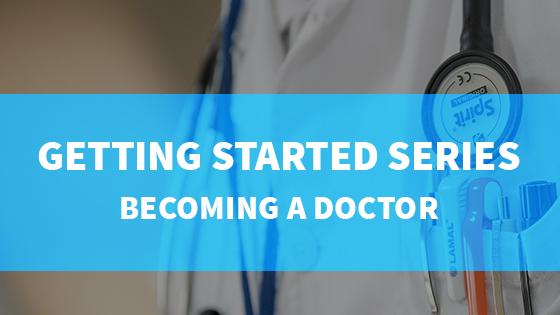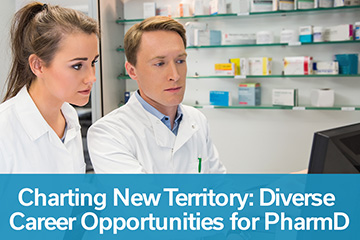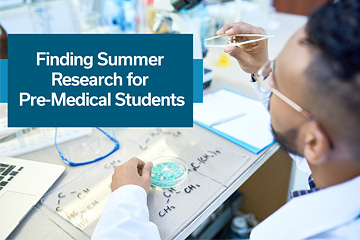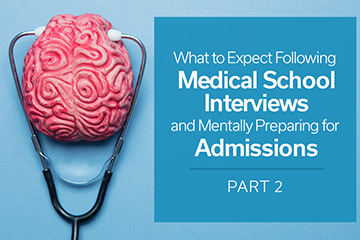
“Getting Started” Series (Part 1): Becoming a Doctor
For many of us thinking about becoming a doctor, we focus all of our current energy on getting into medical school. This is because right now, this seems like the hardest and most important part. While that may be true, you need to make an informed decision.
Life isn’t a piece of cake once you are accepted into medical school. You will continue to train for many years before becoming a fully licensed, independently practicing physician. This training is often long, challenging and stressful. Understanding the extent of training a career in medicine takes may influence your decision to pursue medicine. To help you understand, let’s walk through the key periods in your journey to becoming a doctor.
High School
We are often asked what high school students need to do to get into medical school. The truth is that there isn’t much you can do. Medical schools don’t look at your high school marks, and most of them will only look at extracurricular activities and volunteer work that you do after you turn 16 years old. However, there are a few things you need to think about in high school.
Are there any specific courses you should take? While medical schools don’t require you to have taken specific high school courses, many of them require certain university courses, and how will you perform in those will be affected by how well you were prepared in high school. Experience in biology, chemistry and physics will help with the university courses and the MCAT required by some medical schools. While not required, we recommend taking the three sciences in Grade 11 and 12 if you are serious about medical school.
In addition, you should work hard to get into the university program of your choice. Do your research early and make sure you have the necessary marks and required high school courses. Also, make sure you spend adequate time when deciding which university to go to. Location, class sizes, course selection, quality of program and other factors are important things to think about. Don’t worry if this is confusing, we will explain this in more detail in a later section.
University
University is when you will do the bulk of your preparation for medical school. This is when your grades start mattering, when most applicants take the MCAT, and when applicants really start building their resume of extracurricular experiences and volunteer work.
Most medical schools require the completion of at least 3 or 4 years of undergraduate studies before being accepted. To clarify, this means that for a medical school that requires 3 years of undergraduate studies before being accepted, an applicant can apply for medical school as early as the beginning of his 3rd year, so that he has 3 years completed by the time he is accepted into medical school at the end of his 3rd year. In the same way, for a medical school that requires 4 years of undergrad, the applicant can apply as early as the beginning of his 4th year.
While many applicants go directly from undergraduate studies to medical school, there are others who complete subsequent degrees (Masters, PhD, etc.) or acquire work experience before being accepted into medical school. Simply put, there is no one path to success in medical school.
Application Cycle
The application cycle for medical schools occurs once a year. An application generally consists of your university courses and grades, MCAT score, essays or supplementary application, and letters of reference. However, keep in mind that not all applications are the same and the requirements are often very different. It is important that you research each medical school in detail and understand their requirements.
Applications are generally due in Oct/Nov. Interview invites are sent in Jan to Mar. Interviews occur in Feb to April. Results are sent out in May.
Most applicants apply to more than one medical school. However, since different medical schools have different requirements, you may be eligible for some but not others. Often times applicants must try several cycles before being accepted.
Medical School
Medical school is usually 4 years long. You spend 2 years in “preclerkship” where most of your time is spent in the classroom learning the basics of anatomy, physiology, medical conditions and treatments, with some exposure to basic clinical skills.
The last 2 years of medical school are spent in “clerkship” where you leave the classroom and work full time in the clinical environment, usually hospitals and clinics. During this period, you are considered a “clinical clerk”. Here you spend anywhere from 1 to 8 weeks rotating through various medical disciplines, such as surgery, internal medicine, paediatrics, psychiatric and so on. In clerkship, you become part of the health care team, working with doctors, residents, nurses, social workers and other healthcare staff to care for patients.
Residency
When you complete medical school and pass your licensing examination, you acquire your MD degree and are technically a “doctor”. However, all doctors must complete additional training called “residency” to determine what “type” of doctor you will end up being. As you may know, there are many types of doctors – family doctors, neurosurgeons, psychiatrists, etc. All doctors will undergo residency training that helps them become that specific kind of physician. During this period, you are considered a “resident”.
In residency, you will focus on learning more about the diseases and treatments of your field and acquire increasing responsibility in caring for patients until you have obtained enough knowledge, understanding and skills to operate as an independent doctor. Residency can last anywhere from 2 years (family medicine) to 6 years (neurosurgery) depending on the type of doctor you want to be.
How does this all happen? In the fall of your final year of medical school (i.e. your 2nd year of clerkship), you apply to residency programs at different universities (sort of like the medical school process all over again). As with medical school, there are written applications with grades, essays and reference letters, and interviews. And like medical school, there is no guarantee you will get the residency of your choice. Competing against other medical students for the same spots isn’t easy!
Fellowship (Optional)
Once you complete residency, you are technically able to start practicing as an independent doctor. However, some doctors wish to develop further specializing in their field of medicine and do an additional 1 or 2 years of training called “fellowship”. During this period, you are considered a “fellow”. For example, a radiologist who reads images (CTs, MRIs, etc.) can do a subspecialty fellowship in neuroradiology and become specialized in reading images of the head, neck and nervous system.
Employment
Once a fully licensed independent doctor, where can you work? There are lots of options. Usually doctors work in hospitals or community clinics. Some work in both. If you work at a teaching hospital (i.e. a hospital affiliated with a university), there are often opportunities to be an educator (e.g. teach medical students and residents) and/or researcher while also practicing as a doctor. The beauty of medicine is that you can have a career that goes beyond the clinical practice of a doctor.
For many of us thinking about becoming a doctor, we focus all of our current energy on getting into medical school. This is because right now, this seems like the hardest and most important part. While that may be true, you need to make an informed decision.
Life isn’t a piece of cake once you are accepted into medical school. You will continue to train for many years before becoming a fully licensed, independently practicing physician. This training is often long, challenging and stressful. Understanding the extent of training a career in medicine takes may influence your decision to pursue medicine. To help you understand, let’s walk through the key periods in your journey to becoming a doctor.






